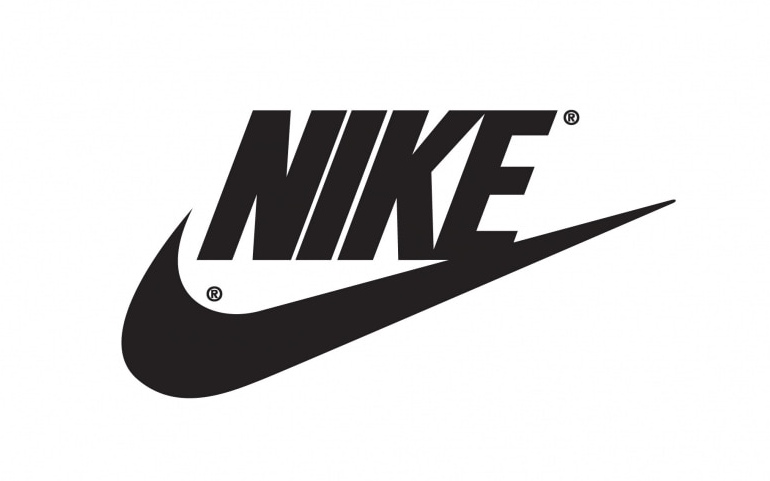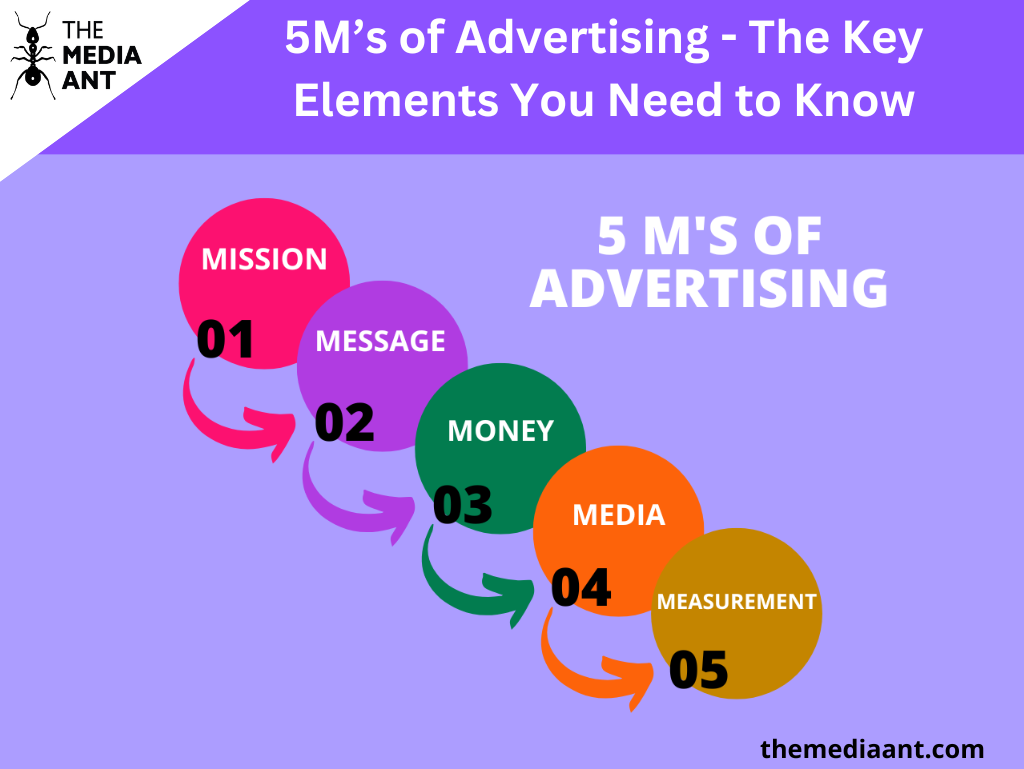In today’s fast-paced world, where consumers are bombarded with messages from multiple sources, it’s essential to create effective advertising campaigns that capture their attention and resonate with them. Successful advertising campaigns require more than just creative ideas, they need to have a strategic approach that focuses on the right message, target audience, and delivery channels. That’s where the 5 m’s of advertising come in. In this article, we’ll explore the 5 m’s of advertising, their importance, and examples of successful advertising campaigns that used them.
What are the 5M’s of Advertising?
The 5 M’s—mission, market, message, media, and measurement—are essential for effective advertising. By considering these elements, you can create campaigns that resonate with your target audience and drive results.
The 5M’s of advertising is a framework that helps advertisers develop a strategic approach to their advertising campaigns. The 5M’s are:
- Mission: What is the objective of the campaign? What do you want to achieve?
- Message: What is the message you want to communicate to your target audience?
- Media: Which channels will you use to deliver the message? How will you reach your target audience?
- Money: What is your budget for the campaign? How much will you spend on each element of the campaign?
- Measurement: What would be the metric to evaluate the effectiveness of the campaign?
By considering each of these elements, advertisers can develop a comprehensive and effective advertising campaign that reaches the target audience and achieves the desired objectives.
The First M: Mission

The first M of advertising is the mission. This element focuses on the objectives of the advertising campaign. Without a clear mission, the advertising campaign is likely to fail. The mission should be specific, measurable, achievable, relevant, and time-bound. A good mission statement for an advertising campaign should answer the following questions:
- What is the objective of the campaign?
- What do you want to achieve?
- How will you measure the success of the campaign?
- Is the objective relevant to the target audience?
- What is the timeline for achieving the objective?
The Second M: Message

The second M of advertising is the message. This element focuses on the message that advertisers want to communicate to their target audience. The message should be clear, concise, and memorable. It should resonate with the target audience and convey the benefits of the product or service being advertised. A good message should answer the following questions:
- What is the unique selling proposition (USP) of the product or service?
- What are the benefits of the product or service?
- How does the product or service solve the target audience’s pain points?
- What emotions does the message evoke in the target audience?
The Third M: Media

The third M of advertising is media. This element focuses on the channels used to deliver the message to the target audience. Advertisers should use channels that their target audience uses and engages with the most. The choice of media should be based on the budget, objectives, and message of the advertising campaign. The most common media channels used in advertising include:
- Television
- Radio
- Print (newspapers and magazines)
- Outdoor (billboards and transit ads)
- Digital (social media, search engine marketing, display advertising, and video ads)
The Fourth M: Money

The fourth M of advertising is money. This element focuses on the budget allocated for the advertising campaign. The budget should be determined based on the objectives, message, and media choices of the campaign. The budget should be allocated to each campaign element based on its importance and effectiveness. Advertisers should also monitor the campaign’s performance and adjust the budget accordingly.
The Fifth M: Measurement

The 5th M of Marketing refers to measurement, which is the process of tracking and evaluating the effectiveness of marketing efforts. It involves gathering data and analyzing the performance of marketing campaigns, in order to make informed decisions and improve future strategies.
Measurement is an essential aspect of marketing because it allows businesses to determine whether their efforts are meeting their goals and objectives. By tracking metrics such as website traffic, conversion rates, customer acquisition costs, and customer lifetime value, businesses can identify areas where they are succeeding or falling short.
Overall, measurement is a critical component of a successful marketing strategy. By regularly tracking and analyzing marketing performance, businesses can make data-driven decisions that improve their ROI and drive long-term growth.
5 M’s of Advertising: Examples

5 M’s of advertising of the “Just do it” campaign by Nike that became the talk of the town and nobody got over it.
Mission
In the 80s, the majority of Americans were obese and coming out of a recession. Nike realized that they needed to appeal to a much larger audience and turn their brand into more than just fitness gear. Thus “Just Do It.” was born. The Mission of the campaign was simple, to reach everyone, regardless of age, gender, or physical fitness level.
Message
The famous Nike slogan “Just Do It” was created as a simple and effective way to motivate people, not just elite athletes, to pursue their fitness goals and overcome everyday challenges. By featuring a wide range of celebrity athletes, such as Michael Jordan, Kobe Bryant, Roger Federer, and Serena Williams, Nike showed that their products were suitable for both professional athletes and everyday customers. This marketing strategy made consumers feel like they too could achieve greatness by purchasing Nike gear.
Media
Nike used various media channels to promote the campaign, including television, print, and outdoor advertising. The company also leveraged social media to engage with consumers and share inspiring stories of athletes who had overcome challenges and achieved success.


Money
Nike invested heavily in the campaign, according to a report from the Center for Applied Research, Nike spent $300 million on overseas advertising alone between 1988 (the year the “Just Do It” campaign was created) and 1998. During these first ten years, Nike increased its market share of the “domestic sport-shoe business” from 18 percent ($877 million) to 43 percent ($9.2 billion).. The company used high-profile celebrities and athletes in their advertisements, including Michael Jordan, who was at the peak of his career at the time.
Measurement
According to a report by Center of Applied Research, Nike increased its market share of the “domestic sport-shoe business” from 18 percent ($877 million) to 43 percent ($9.2 billion). One of the more remarkable aspects of this report is the estimate that “80 percent of the sneakers sold in the U.S. are never used for the activities for which they have been designed.” Think about that for a second. Four out of every five products purchased are not used for the purpose for which they were designed. So, why are they selling? Because Nike’s marketing strategy says, “Just Do It.” If you have a body, you’re an athlete.
In summary, Nike’s “Just Do It” campaign was successful because it effectively communicated the company’s mission, had a powerful message that resonated with consumers, utilized various media channels to reach its target audience, invested significant resources into the campaign, and closely monitored its impact through various metrics.
Conclusion
In conclusion, the 5 M’s of advertising are a framework that can help advertisers create effective advertising campaigns. By focusing on the mission, message, media, and money, advertisers can develop campaigns that resonate with their target audience, convey the benefits of their product or service, and achieve their business objectives.
Looking to advertise your product or services? Fill the below form
FAQs Related to 5M’s of Advertising
What are the 5 M’s of advertising?
The five elements of advertising are Mission, Message, Media, Money and Measurement.
What do the 5M’s mean?
The 5 M’s in marketing stand for mission, message, media, money and measurement.
Mission: What is the objective of the campaign? What do you want to achieve?
Message: What is the message you want to communicate to your target audience?
Media: Which channels will you use to deliver the message? How will you reach your target audience?
Money: What is your budget for the campaign? How much will you spend on each element of the campaign?
Measurement: What would be the metric to evaluate the effectiveness of the campaign?
How do 5M’s help businesses in advertising?
The 5ms help businesses in advertising by providing a framework for planning and executing an effective advertising campaign. By clearly defining the mission, message, money, media, and measurement, businesses can ensure that their advertising efforts are focused, targeted, and measurable. This can help businesses to optimize their advertising budget, improve their return on investment (ROI), and ultimately achieve their marketing goals.
How to advertise in different channels?
To advertise in different channels, businesses can follow these steps:
Identify the target audience: Determine who is your target audience and for whom the product or service is being advertised.
Research the channels: Research the different advertising channels that are available and determine which channels are most effective for reaching the target audience.
Develop the advertising message: Create a compelling message that resonates with the target audience and communicates the product or service’s benefits.
Design the advertising creative: Design the creative elements of the ad, including the visuals, copy, and branding.
Set the advertising budget: Determine the advertising budget for each channel and allocate resources accordingly.
Launch the advertising campaign: Launch the advertising campaign across the selected channels and monitor its performance.
Measure the results: Measure the effectiveness of the advertising campaign and use the insights gained to optimize future advertising efforts.





